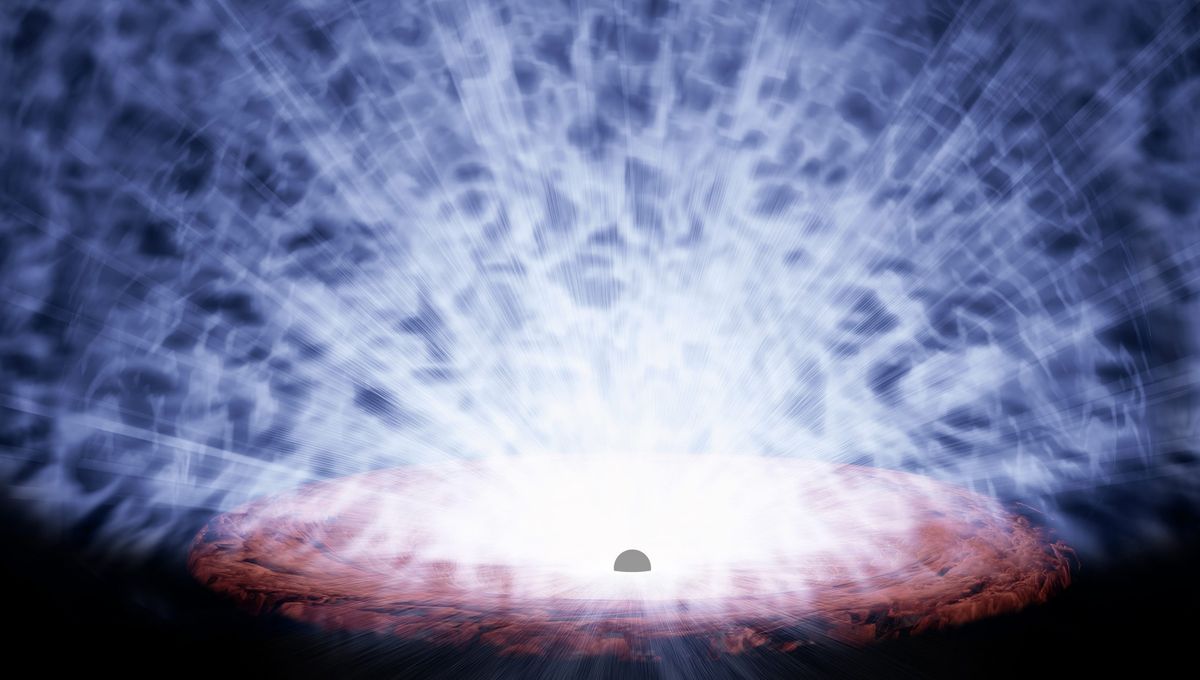
Quasars are a state when a supermassive black hole at the core of a galaxy is feeding at such a rate that it ends up spewing out more than it can chew. The material can glow so bright that it outshines the whole galaxy, and some of it can reach incredible speeds. Researchers have discovered one of these quasars, PDS 456, experiencing what can only be described as a violent storm of plasma.
For a supermassive black hole to turn into a quasar, something must bring material for it to feed on near to it. This is often the result of a galaxy collision, a takeout delivery of material into the central region. Quasar activity can generate a feedback mechanism with the spewing of plasma that eventually forms galaxy-wide winds. However, how the winds form really close to the black holes is unclear.
Thanks to the X-ray Imaging and Spectroscopy Mission (XRISM), a JAXA-led international space telescope, researchers have now resolved powerful outflows for PDS 456. It turns out, they are weird. The winds are not smooth, but clumpy. With XRISM, researchers resolved five different gas components, moving at between 20 to 30 percent of the speed of light.
The team pictured the emission of a rapid-fire stream of gas “bullets” being shot by PDS 456. Every year, the supermassive black hole loses enough gas to make 60 to 300 stars like the Sun, and these winds are carrying energies over 1,000 times that of galactic-scale winds, although instead of spanning thousands of light-years, the bullet-like outflows originate from the closest 0.1 light-years to the black hole.
The exact connections between the outflows and the evolution of galaxy winds is unclear, as it is unclear how they fit in the co-evolution between a supermassive black hole and its host galaxy. The researchers are continuing to study this galaxy to solve this mystery of galaxy evolution.
“PDS 456 is a valuable laboratory for studying the very powerful winds produced by supermassive black holes in the local universe. This new observation has allowed us to measure the geometry and speed distribution of the wind with a level of detail that was unthinkable before the advent of Xrism,” Valentina Braito, an INAF researcher in Milan, said in a statement.
PDS 456 is a relatively close quasar with a supermassive black hole weighing over 1.5 billion times the mass of the Sun. It is located 2.5 billion light-years from us. Studying it in detail is easier, and it can inform us about more distant quasars. The team is also interested in different quasars, so they can then see if PDS 456 is an exception or the rule.
The study is published in the journal Nature.
Source Link: Supermassive Black Hole’s Storm Throws Gas "Bullets" At 30 Percent Of The Speed Of Light